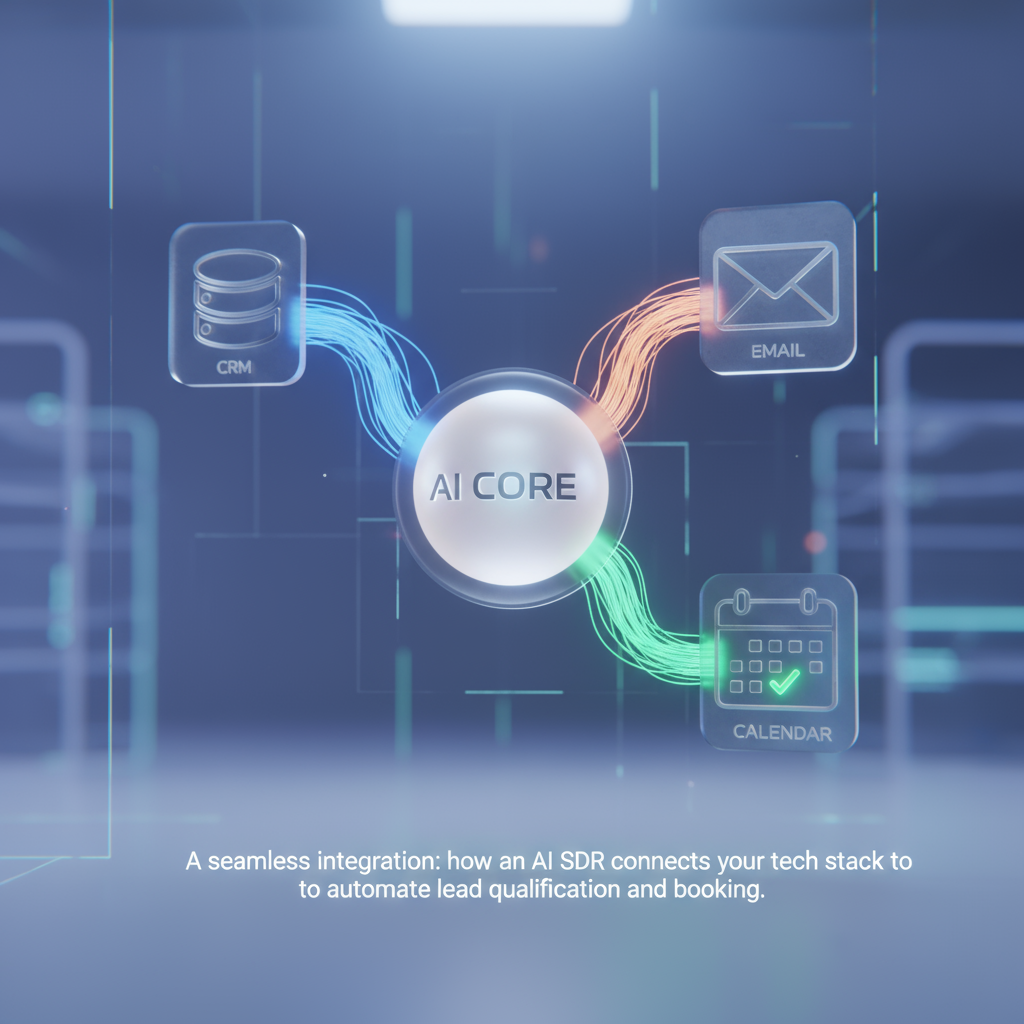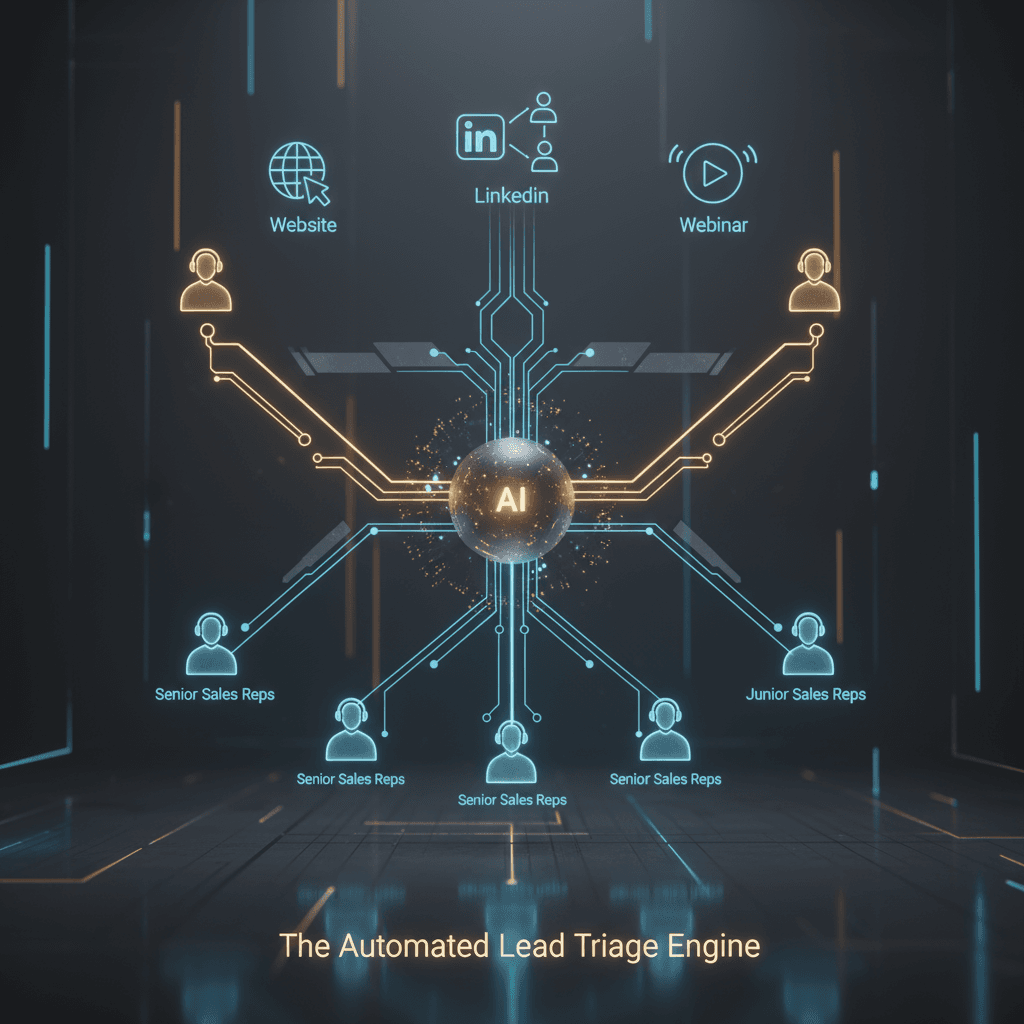The Real ROI of an AI SDR: A Founder's Guide to Cutting Sales Costs in Dubai
Hiring a good Sales Development Representative (SDR) in Dubai is expensive and slow. You spend weeks recruiting, months training, and over AED 200,000 a year for someone who might leave in 18 months. Meanwhile, expensive inbound leads go cold because your team is asleep, in meetings, or simply overloaded. This isn’t a people problem; it’s a capacity problem. An AI SDR agent doesn't just cut costs—it closes the speed and scalability gaps that lose you revenue.
Key Takeaways: The Measurable Impact of an AI SDR
- Cut Sales Costs by 70-80%: Replace a fully-loaded AED 200k+ annual SDR salary with a predictable, scalable AI agent subscription. Redirect that budget to growth, not just headcount.
- Respond to Every Lead in <2 Minutes, 24/7: Convert more inbound interest by engaging leads instantly, at any time of day or night. Stop losing deals to competitors who simply answer first.
- Achieve 100% CRM Discipline: Eliminate manual data entry errors. Your AI SDR logs every single touchpoint, creating a perfectly clean pipeline for your account executives to close.
- Scale Your Outreach Instantly: Go from qualifying 50 to 500 leads a day without hiring an entire new team. Scale up for a product launch or scale down in a slow month with zero friction.
- Focus Your Human Team on Closing: Free your expensive, highly-trained sales team from repetitive qualification tasks. Let them spend their time on what matters: high-value conversations with demo-ready prospects.
The Unit Economics: Human SDR vs. AI SDR
Founders and ops leaders live by the numbers. Let’s break down the real cost of a traditional sales development function compared to an AI-powered one. A typical Dubai-based SDR doesn't just cost a base salary; the fully-loaded cost is far higher.

Human SDR: The Hidden Costs
The true cost to hire, train, and retain an SDR in the UAE can be surprising.
- Salary & Commission: A competitive package can easily exceed AED 15,000/month.
- Recruitment Fees: Agency fees often run 15-20% of the annual salary (AED 25,000+).
- Visas & Insurance: Essential overhead that adds up quickly.
- Tools & Software: LinkedIn Sales Navigator, CRM seats, sales intelligence tools.
- Training & Ramp-Up Time: It takes an average of 3-4 months for a new SDR to become fully productive. That's a quarter of lost opportunity cost.
Total annual investment per human SDR: Easily AED 200,000 - 275,000.
AI SDR: A Predictable Growth Model
An AI SDR operates as a service. The cost is a predictable subscription that replaces the entire stack of salary, commissions, and recruitment fees. Instead of a massive fixed cost, you get a variable operational expense that scales with your needs. The result is a model that saves up to 80% on direct costs while delivering more consistent output. For more detail on implementation, see our guide on how to build an AI workforce.
Speed-to-Lead: The Metric That Defines Your Win Rate
In sales, speed is everything. A frequently cited study by Lead Response Management showed that responding to a web lead within 5 minutes versus 30 minutes can decrease the odds of qualifying it by 21 times. Your buyers expect instant answers. An AI SDR makes that the standard for your business.
Imagine a high-intent prospect fills out your "Request a Demo" form at 8 PM on a Thursday. With a human team, they get an email the next morning. By then, they've already booked a call with two of your competitors. An AI SDR engages them via email or WhatsApp within 90 seconds, asks the right qualifying questions, and books the demo directly into your AE's calendar.
Before: 12-hour lead response time, 4% conversion rate from demo request to demo booked.
After: 90-second lead response time, 25% conversion rate from demo request to demo booked.

Ready to see it in action?
Stop losing leads to slow follow-up. Book a 15-min demo to map your first AI agent—and see the potential ROI in 2–3 weeks.
A Framework for AI SDR Integration
Integrating an AI agent isn't about replacing your team; it's about augmenting them. Here’s a simple framework for a seamless rollout.
- Audit & Map: Document your current lead qualification process. What are the exact questions your best SDR asks? What are the disqualification criteria? This becomes the AI's playbook.
- Wire the Tech Stack: Connect the AI agent to your core systems. This typically means integrating with your CRM (like HubSpot or Salesforce) to receive new leads and your communication channels (like email or WhatsApp) to engage them.
- Sequence the Handoff: Define the precise trigger for handing a qualified lead to a human Account Executive. Is it after they answer three key questions? When they explicitly ask to speak to a human? Make the handoff seamless and documented in the CRM.
- Benchmark & Iterate: Run the AI agent for two weeks. Measure its performance on key metrics: response time, qualification rate, and positive reply rate. Use the data to refine its scripts and logic.

Frequently Asked Questions (FAQ)
- How long does it take to deploy an AI SDR?
- Typically, the initial mapping and integration takes 2-3 weeks. We focus on getting a minimum viable agent live quickly to start generating data and booking meetings.
- Will my customers know they are talking to an AI?
- It's up to you. Some clients choose transparency, while others have agents that are indistinguishable from humans in text-based conversations. The goal is a helpful, efficient experience, not deception.
- How does the AI handle questions it can't answer?
- It executes a pre-defined "escalation protocol." This usually involves instantly notifying a human manager and passing the conversation over with full context for a seamless takeover.
- Is it compliant with data privacy laws in the UAE?
- Yes. The agents operate within the data infrastructure you control, adhering to the same data handling and privacy standards (like PDPL) as the rest of your tech stack.
- What channels can the AI SDR use to communicate?
- Primarily email and WhatsApp, as these are the most common and effective channels for initial business communication in the UAE and wider region. It can also monitor and respond to website chat widgets.
- Can the AI SDR manage both inbound and outbound leads?
- Absolutely. It excels at instantly qualifying inbound leads from your website but can also be deployed to run targeted outbound campaigns to nurture cold lists or re-engage past leads.
- What does the handoff to a human salesperson look like?
- Once a lead is qualified, the AI sends a notification to the assigned AE (e.g., via Slack or email) with a link to the full conversation history in the CRM. It can also book a meeting directly in the AE's calendar based on their availability.
- Can it communicate in Arabic?
- Yes, our agents are multi-lingual and can be configured to handle conversations fluently in both English and Arabic, including dialect-specific nuances.
Your First 3 Steps to Implementation
Moving from theory to practice is simpler than it seems. If you want to capture the ROI we've discussed, here’s where to start:
- Calculate Your "Cost Per Qualified Lead": Take your total monthly sales development cost (fully-loaded salaries + tools) and divide it by the number of qualified leads your team produces. This is your baseline metric to beat.
- Identify the Biggest Bottleneck: Is it lead response time? Inconsistent qualification? Poor data entry? Pinpoint the single biggest point of failure in your current process. That's the first problem your AI agent will solve.
- Map One Workflow: Don't try to automate everything at once. Choose one specific workflow, like "Qualify Inbound Demo Requests from the Website," and map it from end to end. This focused approach delivers the fastest time-to-value.
By focusing on tangible metrics and a phased rollout, you can build an AI workforce that delivers a clear, measurable return on investment from day one.



